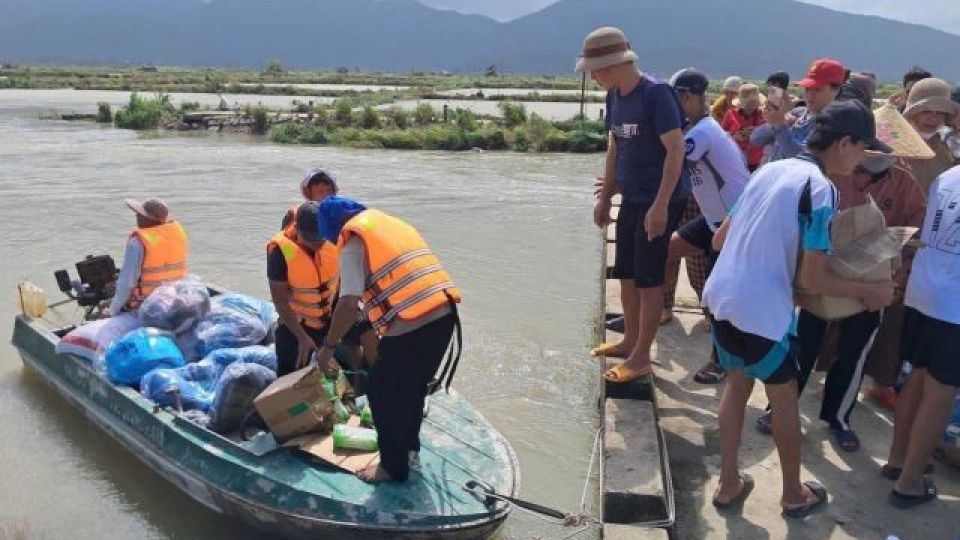November 27, 2025
HANOI – From early 2025 to the present, a relentless series of storms, floods and landslides – some at historic severity – has battered Việt Nam, leaving 409 people dead or missing and injuring 727 others, according to the latest data.
Over 337,000 houses have collapsed, been swept away or suffered damage, while 553,417 hectares of rice and crops and 376,792 hectares of other plantations have been inundated. Total economic losses are estimated at VNĐ85.099 trillion (US$3.2 billion).
For comparison, the whole of 2024 saw 519 people killed or unaccounted for, and economic damages were at about VNĐ3.9 trillion.
Speaking at a forum on applying science and technology in disaster forecasting and early warning, organised by the Ministry of Agriculture and Environment, Nguyễn Tôn Quân, Deputy Head of the Community Disaster Management and Communications Division under the Department of Dike Management and Natural Disaster Prevention and Control, said 19 storms and tropical depressions had entered Việt Nam’s East Sea (internationally known as the South China Sea) this year, including 14 typhoons and five depressions.
This number was just one short of the record set in 2017 and might rise further, as a tropical depression near the Philippines was expected to move into Vietnamese waters and could become the country’s 15th storm of 2025 in the coming days.
Extreme rainfall and historic flooding had struck 13 river basins across the northern and central regions in recent months, inundating urban areas and low-lying zones from the north to the south, including Hà Giang, Thái Nguyên, Bắc Ninh, Hà Nội, Thanh Hóa, Nghệ An, Quảng Trị, Huế, Đà Nẵng, Quảng Ngãi, Gia Lai, Đắk Lắk and Khánh Hòa. Several areas were hit repeatedly in quick succession, creating compound disasters of overlapping storms, floods, flash floods and landslides that severely damaged infrastructure and threatened critical flood-control works.
The mid-November floods in central Việt Nam alone killed or left 102 people unaccounted for. More than 200,992 houses were flooded, 119 national and provincial roads were submerged or blocked by landslides, and over 82,000 hectares of crops and 117,000 hectares of other plantations were damaged. Initial losses from that event were estimated at VNĐ13.248 trillion (over $500 million).
According to the ministry, the final months of 2025 still pose risks of major floods in the central region, particularly if the developing system becomes Storm No.15 and moves towards the south-central coast, which is still reeling from the devastating floods. Local authorities are urged to continue recovery work while preparing for further severe weather.
The Ministry of Agriculture and Environment plans to strengthen forecasting capacity by expanding rainfall monitoring networks, improving heavy-rain predictions and producing detailed hazard maps down to village level for flash floods and landslides. Authorities also aim to relocate households in high-risk areas, adjust farming practices to better align with natural conditions and upgrade vulnerable dykes, reservoirs and flood-control structures.
Other priorities include revising reservoir-operation procedures, improving infrastructure resilience, enhancing community-level disaster-response training and boosting communication so residents receive timely warnings.
The meteorological agency will continue expanding international cooperation and applying digital technologies for real-time disaster monitoring. Officials also plan to mobilise domestic and international support to help affected communities rebuild more safely and sustainably.
Dr Cao Đức Phát, former Minister of Agriculture and Rural Development and Chair of the Management Council of the Disaster Prevention Community Fund, said Việt Nam has endured a succession of natural disasters in recent years at record levels of severity. Preparedness, especially forecasting and early warning, plays a decisive role.
Although monitoring and storm-forecasting capacity has improved significantly, increasingly unpredictable disasters mean surveillance and warning systems are still struggling to keep pace, Phát noted.
He stressed that building region-specific flood-risk simulations is now essential. Both residents and authorities need tools showing how far flooding will spread with rainfall of 300 mm, 500 mm or 700 mm, and must be able to respond even during power outages or signal loss.
Some localities, such as the central province of Quảng Ngãi, have piloted this model and are continuing to refine it to better reflect real conditions.


